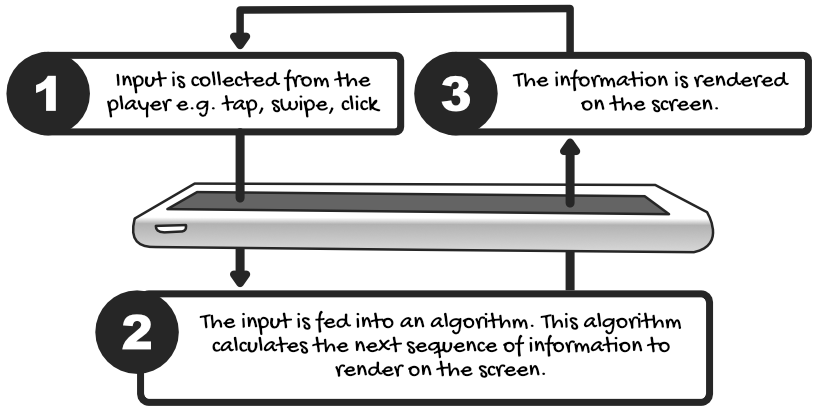"Oh, plenty. Plenty, plenty, plenty. But first I want to finish talking about David Bohm, who is a genius as far as I am concerned. Way ahead of his time.
Anyway, Bohm learned about holograms, and he was fascinated by their hidden order. When you look at a sheet of holographic film, it just looks like a disordered mess; chaos. But when you shine a laser through the sheet, the incredible order embedded in the chaos unfolds to reveal a three-dimensional illusion.
Bohm became convinced that reality was a kind of 'holomovement.' I personally just proved that reality and consciousness are the same thing, but Bohm was saying that decades ago — he just didn't build deductive proof for it. He argued that the weird and wonderful phenomena in quantum physics, such as non-locality, are easily explained if the observer is the observed. Here, let me read you a section from The Holographic Universe that sums it up quite well."
One of Bohm’s most startling assertions is that the tangible reality of our everyday lives is really a kind of illusion, like a holographic image. Underlying it is a deeper order of existence, a vast and more primary level of reality that gives birth to all the objects and appearances of our physical world in much the same way that a piece of holographic film gives birth to a hologram. Bohm calls this deeper level of reality the implicate (which means ‘enfolded’) order, and he refers to our own level of existence as the explicate, or unfolded, order.
He uses these terms because he sees the manifestation of all forms in the universe as the result of countless enfoldings and unfoldings between these two orders. For example, Bohm believes an electron is not one thing but a totality or ensemble enfolded throughout the whole of space. When an instrument detects the presence of a single electron it is simply because one aspect of the electron’s ensemble has unfolded, similar to the way an ink drop unfolds out of the glycerine, at that particular location. When an electron appears to be moving it is due to a continuous series of such unfoldments and enfoldments.
Michael Talbot
"There," I said. "That sentence right there. There was something about that sentence that struck me when I read it five years ago. What does that remind you of? A continuous series of unfoldments and enfoldments?"
"Errr…" Zac hesitated, a blank look on his face.
I flicked through my phone and returned to an image we'd looked at earlier in the night.

"A game loop, Zac!" I shoved the phone in his face. "It's like a game loop! A game loop is a constant series of unfoldments and enfoldments. A game collects input from the higher dimension, enfolds it into the algorithm at the lower dimension, then unfolds the next frame. It's a constant series of unfoldments and enfoldments."
Zac grabbed the phone and held it close to his face. "Ahh, I see what you mean."
He threw the phone back to me, and I continued talking. "The connection stood out to me because I happened to be teaching myself mobile game development at the time. Then I thought, 'Wait a minute… David Bohm never really lived through the age of computer games or artificial intelligence, so he didn't have that mental model to work with. Maybe if he had lived fifty years later, he would have seen the connection too.' Anyway, I'll keep reading."
When an electron appears to be moving it is due to a continuous series of such unfoldments and enfoldments.
Put another way, electrons and all other particles are no more substantive or permanent than the form a geyser of water takes as it gushes out of a fountain. They are sustained by a constant influx from the implicate order, and when a particle appears to be destroyed, it is not lost. It has merely enfolded back into the deeper order from which is sprang. A piece of holographic film and the image it generates are also an example of an implicate order because the image encoded in its interference patterns is a hidden totality enfolded throughout the whole. The hologram projected from the film is an explicate order because it represents the unfolded and perceptible version of the image.
The constant flowing exchange between the two orders explains how particles, such as the electron in the positronium atom, can shapeshift from one kind of particle to another. Such shiftings can be viewed as one particle, say an electron, folding back into the implicate order while another, a photon, unfolds and takes its place. It also explains how a quantum can manifest as either a particle or a wave. According to Bohm, both aspects are always enfolded in a quantum’s ensemble, but the way an observer interacts with the ensemble determines which aspect unfolds and which remains hidden.
Michael Talbot
"There we go again," I said. "He is describing a game loop using the metaphor of a hologram. The way an observer interacts with a game determines which aspect of the game unfolds and which remains hidden."
As such, the role an observer plays in determining the form a quantum takes may be no more mysterious than the fact that the way a jeweller manipulates a gem determines which of its facets become visible and which do not.
Because the term hologram usually refers to an image that is static and does not convey the dynamic and ever active nature of the incalculable enfoldings and unfoldings that moment by moment create our universe, Bohm prefers to describe the universe not as a hologram, but as a ‘holomovement’.
The existence of a deeper and holographically organised order also explains why reality becomes nonlocal at the subquantum level. As we have seen, when something is organized holographically, all semblance of location breaks down. Saying that every part of a piece of holographic film contains all the information possessed by the whole is really just another way of saying that the information is distributed nonlocally. Hence, if the universe is organised according to holographic principles, it, too, would be expected to have nonlocal properties.
Michael Talbot
"Non-local properties," I reiterated. "Like computer code. A codebase is non-local, as is a hologram."
Zac looked at me. "Yes, well, it's all rather fascinating, but I'm trying to figure out what this has to do with torturing an AI superintelligence, like you mentioned earlier."
"Oh! I'll tell you now."
"Wanna walk and talk?" he asked. "We could wander down to Redleaf and go for a swim. It's only one a.m. on a Thursday, so I doubt anyone will be around."
"Sure."
I packed the remainder of the grapes into Zac's bag. Zac threw out the cantaloupe scraps, and we started walking through the silent park together.

